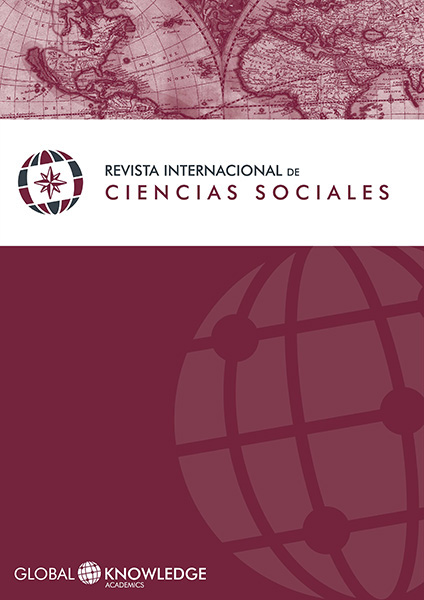Food and Social Differentiation: The Case of a Community in Mexico
DOI:
https://doi.org/10.37467/gka-revsocial.v2.1227Keywords:
Social Differentiation, Food, Mexico ., GenderAbstract
The purpose of the study was to analyze, through the ethnographic method, the meanings of food as a social differentiators in a rural village of contemporary Mexico. Housewives and female kin are in charge of preparing the daily meal in San Jerónimo Amanalco. They prepare stews, warm tortillas and serve their family and guests. Men are responsible for preparing the meat for the holidays giving them higher status with respect to women who are limited in cooking on those occasions, dishes with cereals, vegetables and legumes. We have also discovered that within the meat consumed, there is an assignment status as the Coca-Cola consumption. All these elements make up a complex array of social and symbolic differentiation in a rural community of Mexico.
Downloads
Global Statistics ℹ️
|
2340
Views
|
1730
Downloads
|
|
4070
Total
|
|
References
Arroyo, P. (2006). “ Estudios sobre antropología y nutrición en México”. En: M. Bertrán y P. Arroyo, Antropología y Nutrición, México: FUNSALUD-UAM-X.
Bourdieu, P. (1988). La Distinción. Criterios y Bases Sociales del Gusto. España: Taurus.
Brillat-Sauvarin, A. (1834). Physiologie Du Gout ou Méditations de Gastronomie Trascendante. Tomo1, Paris: Just Tessier.
Contreras Hernández, J. y Gracia Arnáiz, M. (2005). Alimentación y Cultura. Perspectivas Antropológicas. Barcelona: Ariel.
De Garine, I. (1995). “Los Aspectos Socioculturales de la Nutrición”. En: J. Contreras, (Coord), Alimentación y Cultura: necesidades, gustos y costumbres . España: Universitat de Barcelona.
DeVault, Marjorie L. (1991). Feeding the family: the social organization of caring as gendered work, Women in culture and society. Chicago: University of Chicago Press.
Draper, H.H. (1977). “The Aboriginal Eskimo Diet in Modern Perspective”. American Anthropology, New Series, 79 (2), pp. 309-316. DOI: https://doi.org/10.1525/aa.1977.79.2.02a00070
Farb, P. y Armelagos, G. (1980). Anthropologie des coutumes alimentaires , Francia: Denoël.
Flandrin, J.L. y Cobbi, J. (Eds). (1999). Tables D’Hier, Tables d’Ailleurs. Paris: Odile Jacob. Goody, J. (1984). Cuisines, cuisine et clases, Paris: Centre Georges Pompidou.
Goodman, D. y Redclift, M. (1991). Refashioning Nature: Food, Ecology and Culture. Londres- New York: Routledge.
Gopaldas, T., Gupta, A., y Saxena, K. (1983). “The phenomenon of Sanskritization in a forestdwelling tribe of Gujarat, India. Ecology, food consumption patterns, nutrient intake, anthropometric, clinical and hematological status”. Ecology of Food and Nutrition, 12, 217-227. DOI: https://doi.org/10.1080/03670244.1983.9990719
Harris, M. (1994). Bueno para comer. Un estudio antropológico de la alimentación en las distintas culturas: los alimentos buenos y los malos de cada civilización. España: Alianza.
INEGI 2000 XII Censo General de Población y Vivienda 2000 . México, D.F: Instituto Nacional de Estadística, Geografía e Informática.
López, M. (2008). Sin ayuda no hay fiesta. Relaciones de reciprocidad en Santa Catarina del Monte. Tesis de Doctorado en Antropología Social. Universidad Iberoamericana.
Mennell, S.(1985). All manners of food: eating and taste in England and France from the Middle Ages to the present. USA: Illini Books ed.
Mennell, S., Murcott, A. y Otterloo, A.H. (1992). The Sociology of Food. Eating, diet and culture. Londres & Newbury Park California : Sage.
Mindek, D. (1994). No nos sobra, pero gracias a Dios, tampoco nos falta. Crecimiento demográfico y modernización en San Jerónimo Amanalco. Tesis de Maestría en Antropología Social. Universidad Iberoamericana.
Mintz, S.W. (2003). Sabor a comida, sabor a libertad. Incursiones en la comida, la cultura y el pasado. México: Ediciones de la Reina Roja, S.A. de C.V.
Mondragón, J. (2011). “Significados en la Comida en una Comunidad de la Mixteca Poblana y sus Migrantes al Distrito Federal”. En: C. Good, L. E. Corona de la Peña (Coord), Comida, Cultura y Modernidad en México , México: Instituto Nacional de Antropología e Historia.
Montanari, M. (2004). La comida como cultura. España: Trea, S.L.
Ochoa, T. (2011). Representación de persona. Una mirada a través de la salud-enfermedad, alimentación y gordura en San Jerónimo Amanalco, Estado de México. Tesis de Doctorado en Antropología Social, Universidad Iberoamericana.
Pérez Gil, S.E. (2007). “Estudios sobre alimentación y nutrición en México: una mirada a través del género”. Salud Pública de México , 49(6), 445-453. DOI: https://doi.org/10.1590/S0036-36342007000600012
Pérez, O., Austreberta, B., et al . (2012). “Frecuencia del consumo de alimentos industrializados modernos en la dieta habitual de comunidades mayas de Yucatán, México”. Estudios Sociales, 20 (39), pp. 156-184.
Sokolovsky, J. (1995). San Jerónimo Amanalco. Un pueblo en transición. Colección Tepetlaoxtoc. México: Universidad Iberoamericana.
Velázquez, Y. (2011). “Comida y Significado entre los Nahuas de la Sierra Norte de Puebla”. En: L.E.C. Good, Corona de la Peña (Coord), Comida, Cultura y Modernidad en México, México: Instituto Nacional de Antropología e Historia.
Vizcarra, I. (2002). Entre el taco mazahua y el mundo: La comida de las relaciones de poder, resistencia e identidades. México: UAEM.
Wolf, E. (1962). Peuples et civilizations de Amerique Centrale. Des origines à nos jours, Paris: Payot.
Downloads
Published
How to Cite
Issue
Section
License
Those authors who publish in this journal accept the following terms:
-
Authors retain copyright.
-
Authors transfer to the journal the right of first publication. The journal also owns the publishing rights.
-
All published contents are governed by an Attribution-NoDerivatives 4.0 International License.
Access the informative version and legal text of the license. By virtue of this, third parties are allowed to use what is published as long as they mention the authorship of the work and the first publication in this journal. If you transform the material, you may not distribute the modified work. -
Authors may make other independent and additional contractual arrangements for non-exclusive distribution of the version of the article published in this journal (e.g., inclusion in an institutional repository or publication in a book) as long as they clearly indicate that the work was first published in this journal.
- Authors are allowed and recommended to publish their work on the Internet (for example on institutional and personal websites), following the publication of, and referencing the journal, as this could lead to constructive exchanges and a more extensive and quick circulation of published works (see The Effect of Open Access).













